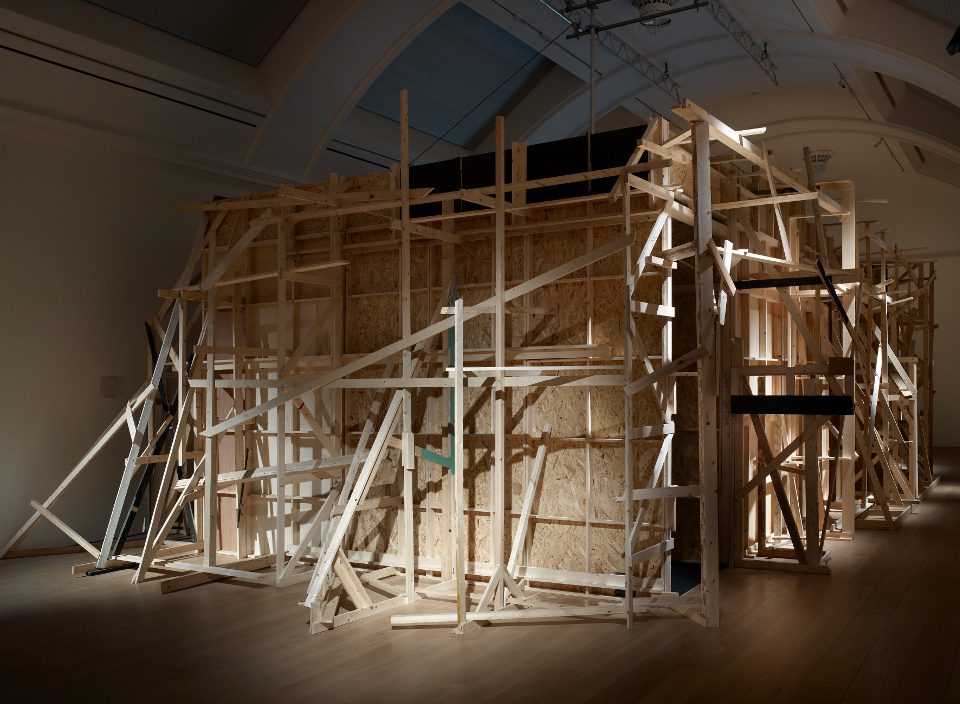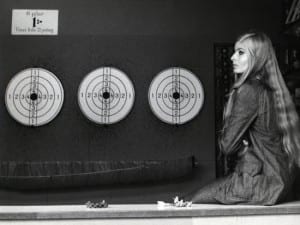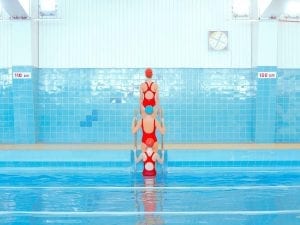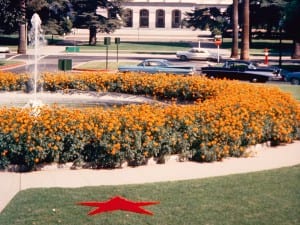The Whitworth brings Ben Rivers’s most ambitious work to date to Manchester. Shot against the dramatic Moroccan landscape, The Two Eyes Are Not Brothers is a compelling adaptation of A Distant Episode, Paul Bowles’s savage and brutal short story of a man travelling through the desert. Filmed in hand-processed 16mm cinemascope, the stories of Paul Bowles and his muse, the renowned Moroccan writer and artist Mohammed Mrabet, are combined with observational footage shot across Morocco. Co-commissioned with Artangel, the piece was originally shown at Television Centre in London. We speak to Mary Griffiths, Curator (Modern Art), about Rivers’s unique film that migrates between the realms of documentary, fantasy and fable. For the presentation at Whitworth, Rivers has used materials sourced from old film sets to create viewing spaces, and inserted works into collection displays, encouraging a new dialogue with the gallery’s collections.
A: The Two Eyes Are Not Brothers has been hailed as one of Ben Rivers’ most ambitious films to date. Can you offer some insight into what to expect from the presentation at Whitworth?
MG: The Whitworth’s exhibition galleries have been transformed into an immersive cinematic space with four projection rooms built out of salvaged film sets. Rivers’ five films and sound work are shown within this disorientating labyrinth. The Two Eyes Are Not Brothers shows how complicated the relationship is between truth and fiction and his interweaving of settings, people and stories present the viewer with a multi-layered narrative of landscape, masculinity and power.
A: Working across documentary, fantasy and fable, Rivers expresses an interest in people separated from society and marginal worlds. How do you anticipate audiences in Manchester will relate to the piece?
MG: I’m sure that they’ll be intrigued by it. Manchester has a large audience for contemporary art and they’ll be impressed by the installation and fascinated by Rivers’ approach to filmmaking. The artist wants visitors to imagine for themselves the connections between the films and I know that the Whitworth’s audience will enjoy this challenge.
A: In addition to the enigmatic landscape of Morocco, where else does Rivers look for inspiration?
MG: Ben Rivers has focused his attention upon four other storytellers or filmmakers. Starting with the writer Paul Bowles, whose story A Distant Episode inspired much of this work, and followed by the artist and storyteller Mohammed Mbaret who was Bowles’s friend and collaborator, and the filmmakers Shezad Dawood and Oliver Laxe, who Rivers filmed making their own films in Morocco.
A: Artists’ film is on the rise. In your opinion, why has the genre’s popularity grown and how important is it for institutions, like the Whitworth, to offer exposure to moving image works?
MG: As access to digital media has become ubiquitous, many artists have begun to make films that can be more experimental because of their comparatively low budgets. In Rivers case this also includes using 16mm film that he hand-processes to achieve remarkable and beautiful effects. Art galleries can make simple projection rooms, or complex immersive spaces that become part of the art.
A: Can you discuss the key concerns to keep in mind when curating and displaying artists’ film?
MG: The most important thing is to keep the artist’s vision of the work at the forefront and make sure that talented and experienced technicians are involved in the setting up of the film or video.
Ben Rivers, The Two Eyes Are Not Brothers, until 22 May, The Whitworth, The University of Manchester, Oxford Road, Manchester, M15 6ER.
For more, visit www.whitworth.manchester.ac.uk.
Follow us on Twitter @AestheticaMag for the latest news in contemporary art and culture.
Credits
1. Ben Rivers, The Two Eyes Are Not Brothers. Courtesy of The Whitworth.





